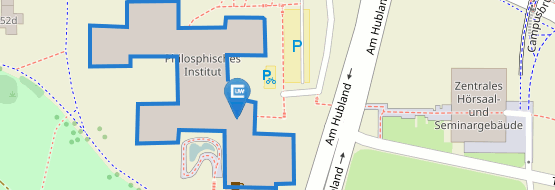Heritage and Innovation in Late Imperial China
The Chinese empire, during the Song, Ming, and Qing dynasties, reached periods of striking cultural and economic flourishing that periodically pushed it to the top of world-historical development. The strength of Chinese culture and society during the late imperial period, rested on a fundament of institutions, practices, and values that had been developed throughout a long history, often referred all the way back to antiquity. But despite its persistent sense of tradition, this cultural system also proved able to renew and continuously develop itself. This interplay of heritage and innovation are the main focus of this module. It places special emphasis on literary texts, both as cultural-historical sources (sub-module 1), and as aesthetic creations that mirror the cultural trends and preferences of their time (sub-module 2). The sub-modules described below are research-oriented, customized courses with specified points of emphasis. Which classes are offered will be decided in discussions with the in-coming students to allow for specialization.
Cultural History – Heritage and Innovation (Ming-Qing)
The society and culture of late imperial China may be analyzed as a complex system of institutions, practices, and values. During the 16th through 18th centuries, this system increasingly became subject to the dynamics of commerce and social change. E.g., the examination system through which new members of the bureaucratic elite were being recruited, became the central institution for social mobility, but due to its success reached the limits of its capacity. The strong sense of continuity and the effects of actual crises were experienced in all fields of cultural and social life. Classes offered in this sub-module pursue these questions by focusing on particular aspects of cultural history, and also on one distinct period. Suggested topics and contents include the following:
- Education: childhood and youth; village schools; schoolteachers; elementary and classical education; examination culture; academies; reading and writing; professional education
- Local History: local gazetteers; city representations; city and countryside; tourism; famous cities of Jiangnan (Yangzhou, Hangzhou, Suzhou, Nanjing); local identity
- Everyday Life: local administration; legal cases; prison; banishment; social control; elementary education; examinations; leisure; merchants; travelling; love and sex
Literature – Heritage and Innovation (Ming-Qing)
Chinese literary history, as it was rewritten in modern period, emphasizes fictional narrative and drama that in premodern times only had subcultural status, but are now considered the masterworks of China’s literary heritage. The outstanding literary works of Ming and Qing narrative and drama, besides providing profound insights into the historical, social and cultural milieus they represent, also offer access to various pertinent contexts, such as the history of the book and of reading, of editing and commenting. In terms of genre evolution they can be studied as encompassing aspects of both persistent cultural continuity and striking innovation that also mirror the developments in society and culture at large. Classes offered in this sub-module focus on individual literary works that exemplify relevant forms, themes, and contexts. Suggested topics and contents include the following:
- The Novel (e.g., Shuihu zhuan): genre evolution; book history; history of editions and commentaries; oral storytelling; politics of revolution; gender politics; rewritings
- The Vernacular Story (e.g., San yan): writing and editing; sources and adaption; collection and arrangement; thematic range; moral retribution; gender themes
- The Classical Tale (e.g., Liaozhai zhiyi): rural background; genre and boundaries; themes of the supernatural; social-historical contexts; medial adaptions
Cultural Continuity and Transformation (Song-Qing)
While the above two sub-modules approach certain aspects of cultural history rather synchronously, focusing on one distinct period, or even moment, in history, this sub-module emphasizes the longue durée, i.e., the wider perspective onto large-scale developments, spanning several centuries, all the way from the Song (11th c.) to the Qing (19th c.). This is meant to nurture an analytical sense for the continuities as well as the slower processes of transformation in China’s cultural history. In the classes offered in this sub-module, the focus is placed on long-term developments in cultural sub-systems, such as either elite or popular cultures, or on the shifts observable in one genre of writing, as exemplified by a diachronic series of sample texts. Suggested topics and contents include the following:
- Elite Culture: family and lineage; local, regional, and national; networks; schools of learning; diaries of reading and writing; genealogies; material culture; regional culture (Huizhou)
- Popular Culture: narrative; drama; prosimetric performance genres; texts and audiences; oral and literate; local and national; adaption to elite taste
- Auto/Biography: life records in historiography and in literature; writing the self across genres and times


